Hey There! Some links on this page are affiliate links, which means that as an Amazon Associate, I may earn a small commission at no extra cost to you. I greatly appreciate your support! Learn more on my Affiliate Disclosure page.
Brunoise cutting is a fundamental skill every home cook should master to elevate their cooking game. In this blog post, you’ll learn “How to Brunoise Onions and Shallots,” which is a precise cutting technique used to create small, uniform dice. This method not only improves the appearance of your dishes but also ensures even cooking, enhancing the overall flavor and texture of your meals.
How to Brunoise Onions and Shallots Like a Chef – VIDEO
The brunoise cut is a precise, fine dice often used in professional kitchens to create uniform pieces for even cooking and beautiful presentation. This technique involves cutting vegetables into small cubes, typically around 1/8 inch or 3mm on each side. It’s especially useful for ingredients like onions and shallots, where even cooking is crucial.
Learning how to brunoise onions and shallots will add a professional touch to your dishes, making them look and taste better. The fine, uniform pieces created by this technique are perfect for garnishes, sauces, and salads, giving your meals a polished, restaurant-quality appearance.
Ingredients and Tools Needed

To master brunoise cutting, you will need fresh onions, shallots, a sharp chef’s knife, a sturdy cutting board, and kitchen towels. Ensuring your knife is sharp is essential for achieving clean, precise cuts.
A good cutting board provides a stable surface, reducing the risk of slipping and ensuring safety while you work. A kitchen towel keeps your workspace clean and secures the cutting board while cutting.
Step-by-Step Guide to Brunoise Onions

Preparing the Onion:
- Start by peeling the onion and cutting it half from top to bottom.
- This makes it easier to handle and provides a flat surface to work on, improving safety and precision.
Making Horizontal Cuts:
- Make several horizontal cuts into the onion, avoiding cutting all the way through.
- These cuts should be evenly spaced to ensure uniform pieces.
Making Vertical Cuts:
- Next, make vertical cuts down the onion, maintaining even spacing for uniform pieces.
- Keep the onion steady with your non-dominant hand, using your knuckles as a guide to avoid cutting yourself.
Final Cuts to Create Brunoise:
- Finish by slicing across the onion to create small, even cubes known as brunoise.
- The key is to cut slowly and precisely, maintaining the same size for each piece.
Step-by-Step Guide to Brunoise Shallots

Preparing the Shallot
- Peel the shallot and cut off the root end for stability.
- The root end helps keep the layers together, making it easier to achieve uniform cuts.
Making Horizontal Cuts
- Make horizontal cuts along the shallot, similar to the onion.
- Ensure these cuts are even and do not go all the way through the shallot.
Making Vertical Cuts
- Follow with vertical cuts, ensuring they are evenly spaced.
- These cuts should also be even in depth and spacing to ensure uniformity.
Final Cuts to Create Brunoise
- Complete the process by slicing the shallot to achieve finely diced pieces.
- Take your time to ensure precision and safety.
Tips and Tricks for Perfect Brunoise

Use a sharp knife, keep your fingers safe with the proper technique, and practice to improve your speed and precision. Here are some additional tips:
| Sharp Knife | Always use a sharp knife to ensure clean cuts and reduce the risk of slipping. |
| Finger Safety | Tuck your fingers in and use your knuckles as a guide to keep your fingers safe while cutting. |
| Practice | The more you practice, the more comfortable and efficient you will become with this technique. |
Common Mistakes to Avoid

Avoid using a dull knife, rushing the process, and making uneven cuts, which can affect cooking time and presentation. Here are some common mistakes and how to avoid them:
| Dull Knife | A dull knife can crush the onion or shallot, leading to uneven pieces. Make sure to keep your knife sharp. |
| Rushing | Take your time to ensure precision. Rushing can lead to mistakes and uneven cuts. |
| Uneven Cuts | Ensure each cut is even in spacing and depth to achieve uniform pieces. |
Conclusion: Elevate Your Cooking with Brunoise Cutting

Mastering the brunoise cut for onions and shallots will take your culinary skills to the next level, impressing your family and guests. This technique not only improves the appearance of your dishes but also ensures even cooking, enhancing the overall flavor and texture of your meals.
Ready to sharpen your knife skills? Try brunoise cutting today and share your experiences in the comments below! Don’t forget to subscribe for more cooking tips and tricks!
Thank you for reading! Be sure to check back soon for more informative and exciting articles.
Happy cooking!
FAQs

What Dishes Can I Use Brunoise-Cut Onions and Shallots In?
Brunoise-cut onions and shallots are perfect for garnishes, soups, salads, and any dish that requires finely diced ingredients.
How Can I Improve My Brunoise Cutting Skills?
Practice regularly, use a sharp knife, and take your time to ensure precision and safety.
Can I Brunoise Other Vegetables?
Yes, you can use this technique on a variety of vegetables like carrots, celery, and peppers.
What Should I Do if My Knife is Dull?
Sharpen your knife using honing steel or a knife sharpener to achieve clean, precise cuts.
Is There a Specific Type of Knife that is Best for Brunoise Cutting?
A sharp chef’s knife is ideal for brunoise cutting due to its size and versatility.
How Do I Keep My Fingers Safe While Cutting?
Use the proper technique by tucking your fingers in and using your knuckles as a guide to avoid accidents.
What’s the Difference Between Brunoise and Other Cutting Techniques?
Brunoise involves creating very small, uniform cubes, whereas other techniques like julienne or dice involve different shapes and sizes.
Hey There! Some links on this page are affiliate links, which means that as an Amazon Associate, I may earn a small commission at no extra cost to you. I greatly appreciate your support! Learn more on my Affiliate Disclosure page.
















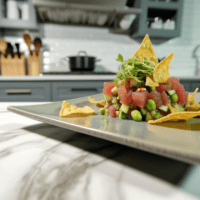
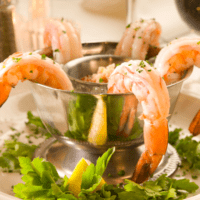

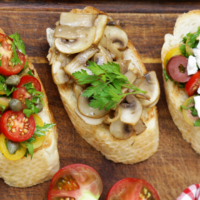
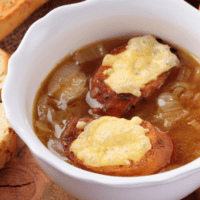
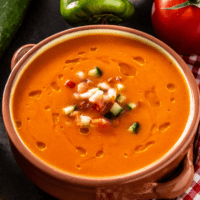
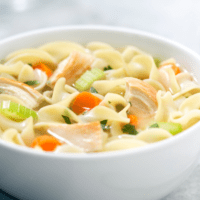
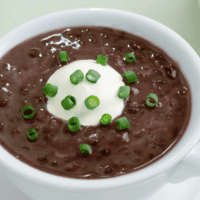




6 Responses
[…] Shallots […]
[…] Shallot […]
[…] Minced shallot […]
[…] Shallot – minced […]
[…] Red onion – ¼ onion – julienne […]
[…] White Onions (3, julienned) […]